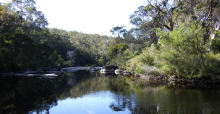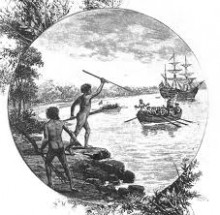 Firstly, an apology for my longer than planned break. I had decided to take some time out from my websites before our wonderful holiday in magical Broome.
Firstly, an apology for my longer than planned break. I had decided to take some time out from my websites before our wonderful holiday in magical Broome.
I’ve also been busy preparing a new version of my eBook Connection: Aboriginal Child Artists Captivate Europe which I will be sending to a publisher for consideration. I really want this important Story to find a wider audience. In addition, I’ve been writing content for our website The Carrolup Story and have linked up with a children’s author/illustrator, Lisa Martello-Hart, to develop a new exciting project. Busy times – no peace for the wicked!




 ‘Our first generations were killed and imprisoned, and females sexually misused. Our second generations turned to alcohol or drugs as their cultural and spiritual identity was damaged; in our third generations we had spousal assault and societal trauma.
‘Our first generations were killed and imprisoned, and females sexually misused. Our second generations turned to alcohol or drugs as their cultural and spiritual identity was damaged; in our third generations we had spousal assault and societal trauma.
 When I came to live in Australia in December 2008, I knew little about the past government policy of removing Australian Aboriginal and Torres Strait Islander children from their families. This policy was introduced by Federal and State government acts in order to assimilate Aboriginal and Torres Strait Islander children into the white-dominated society of Australia. In essence, to help ‘make’ these children ’white’. Children taken from their families as a result of this policy are now known as the ‘Stolen Generations’.
When I came to live in Australia in December 2008, I knew little about the past government policy of removing Australian Aboriginal and Torres Strait Islander children from their families. This policy was introduced by Federal and State government acts in order to assimilate Aboriginal and Torres Strait Islander children into the white-dominated society of Australia. In essence, to help ‘make’ these children ’white’. Children taken from their families as a result of this policy are now known as the ‘Stolen Generations’. The aim of the
The aim of the 






